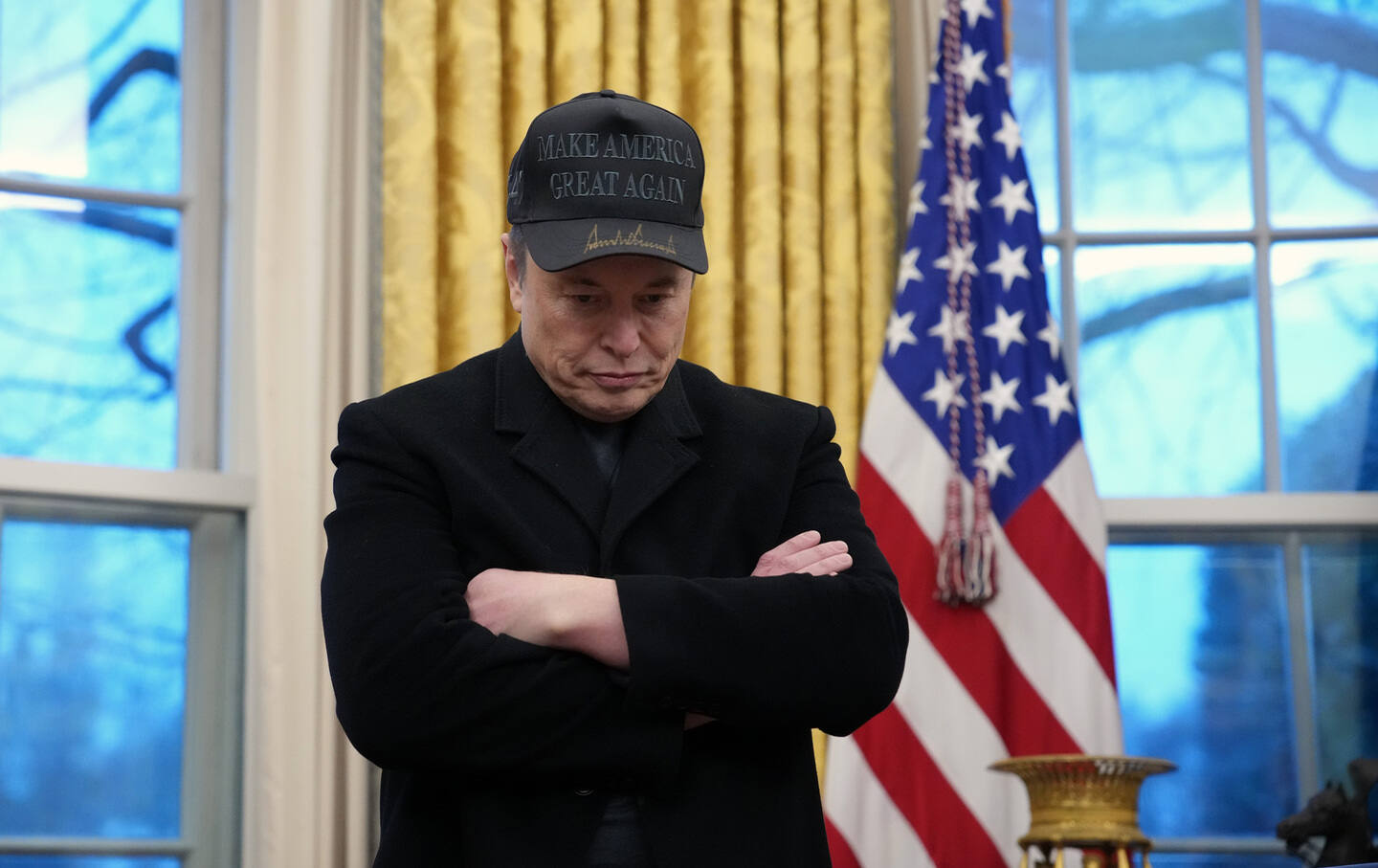Why Walz Won
Kamala Harris set up a virtual primary for her VP contenders—and Tim Walz excited voters like nobody else.
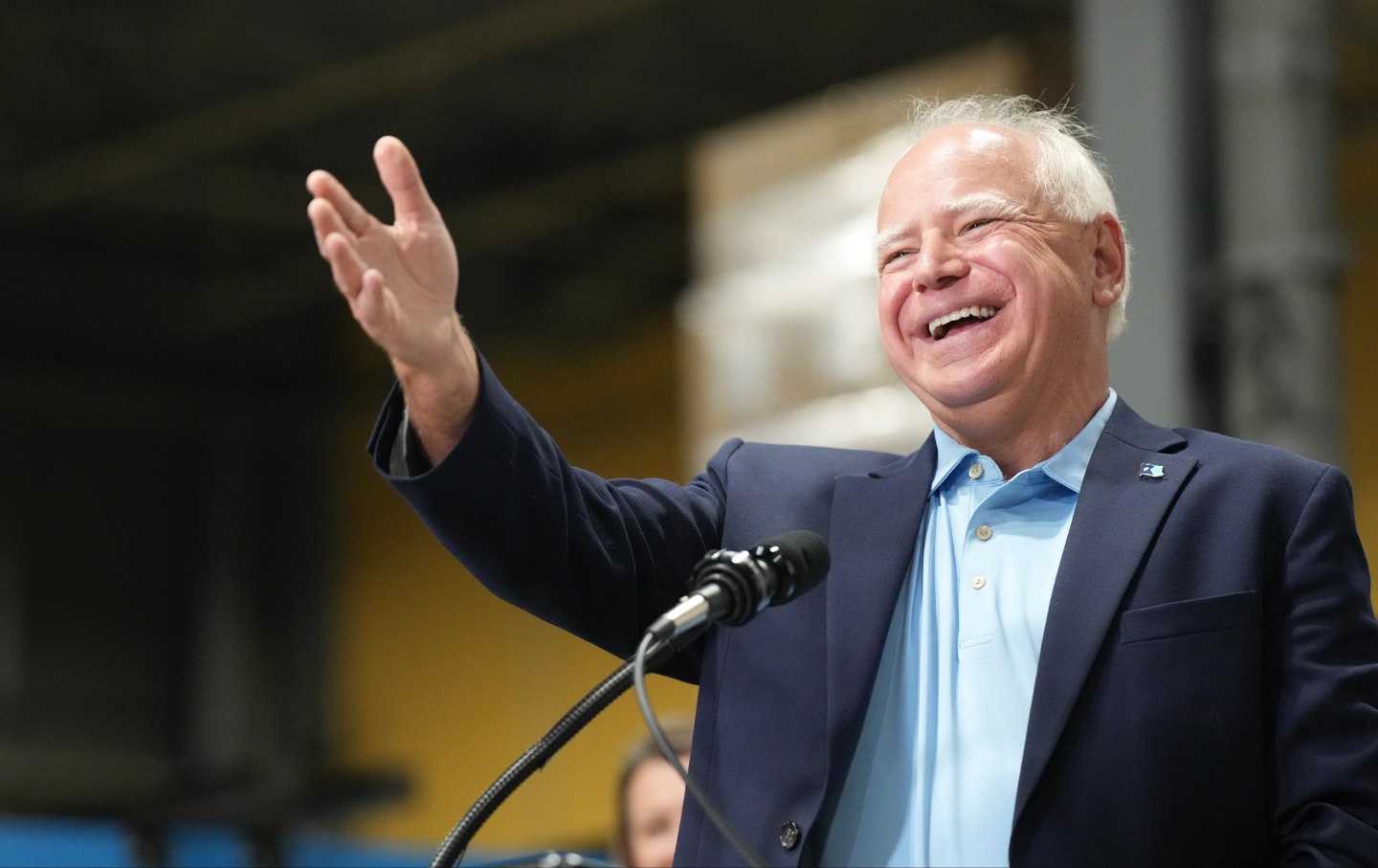
Tim Walz at an event in New Hope, Minnesota, on July 23, 2024.
(Glen Stubbe / Star Tribune via Getty Images)
The late Paul Wellstone used to say that he represented “the Democratic wing of the Democratic Party.” The progressive senator from Minnesota wanted to distinguish himself from the compromising “New Democrats” who sought to move the party away from a focus on economic and racial justice and toward a more centrist, corporate-friendly agenda. After Wellstone died in a plane crash shortly before the 2002 election in which he was expected to win a third term—and perhaps emerge as an anti–Iraq War peace candidate in the 2004 presidential race—his family and friends established Camp Wellstone to train a new generation of progressive leaders.
One of the early “graduates” of the camp’s two-and-a-half-day “campaigns and elections” course was a 41-year-old high school geography teacher and football coach from the small southern-Minnesota city of Mankato, named Tim Walz. The faculty adviser for the Gay-Straight Alliance at the school, Walz was also a decorated command sergeant major in the National Guard who had gotten involved in politics in 2004 as a district coordinator for the “Vets for Kerry” group that championed the candidacy of Democrat John Kerry in the 2004 presidential race.
That wasn’t a classic political résumé, but Walz was undeterred. With his “Camp Wellstone” training, he announced an unlikely bid to defeat six-term incumbent Republican Representative Gil Gutknecht in the 2006 midterms. Running in a rural district where Democrats had struggled for years, Walz campaigned in a folksy, self-deprecating, “Minnesota Nice” style that charmed voters, while at the same time pushing a commonsense agenda that won workers and farmers back to the ballot line of Franklin Roosevelt, Harry Truman, Hubert Humphrey, Walter Mondale, and Wellstone. In one of the biggest surprise results of the 2006 election season, Walz won his first campaign by a 53-47 margin and headed to Washington.
Now, 18 years later, as the two-term Democratic governor of Minnesota, Walz has won another campaign—to become the Democratic nominee for vice president of the United States.
After Joe Biden stood down as the Democratic presidential candidate last month, Vice President Kamala Harris stepped up. She had a narrow window in which to shape the ticket that would go up against Republican Donald Trump and Republican vice-presidential nominee J.D. Vance. Harris could have gone two ways with her VP choice. One option, with so little time and so much to do before the launch of the fall campaign, was to quickly select a running-mate from the predictable pool of prominent Democrats. The other was to open things up, to allow multiple contenders to mount a two-week “virtual campaign” in which they would present themselves to the party and to the candidate. It took confidence to free the process up, but Harris did just that. And, in so doing, she freed herself up to the prospect that the final pick might not be a predictable insider, or, to be more precise, the predictable choice of the predictable insiders.
That decision made Walz’s candidacy possible. But, just as in 2006, he had to come from behind to win. Better-known candidates, particularly Arizona Senator Mark Kelly—a former astronaut and the husband of former US representative Gabby Giffords (D-Arizona), who was shot in a 2011 assassination attempt—and governors of swing states that will be critical in November seemed to have the inside track. Then, Michigan Governor Gretchen Whitmer took herself out of the running, as did North Carolina Governor Roy Cooper. Kelly was criticized for his failure to support organized labor’s top priority on Capitol Hill, the PRO Act, and a candidate who was favored by many union activists, Kentucky Governor Andy Beshear, never quite grabbed the national spotlight. That left Walz in a final competition with Josh Shapiro, the telegenic governor of the ultimate battleground state of Pennsylvania. With his close ties to former president Barack Obama and a winning record in Pennsylvania, Shapiro became an insider favorite. Even after the governor was widely criticized for making a bizarre and troubling comparison of student protesters against genocide in Gaza with members of the KKK and for his support of school vouchers, centrist political strategists and pundits promoted Shapiro as the only logical choice.
Walz took another route altogether. He had to. Minnesota is not a swing state. It’s backed every Democratic presidential nominee since Jimmy Carter in 1976. Even if its elections have always been a good deal more competitive than many national commentators imagine, there was no reason to suspect it would buck that trend in 2024. And while Walz could appeal to voters in the neighboring swing state of Wisconsin—“All roads to the White House lead through the Midwest, and who better to help guide us there than the governor of Minnesota himself,” said Wisconsin Democratic US Representative Mark Pocan—he had to make a distinctive argument for his candidacy.
So Walz presented himself in much the same way as he did in that 2006 race: as an easy-going, plain-spoken Midwesterner who was uniquely well-prepared to call out the lies, the extremism, and, yes, the weirdness of the contemporary Republican Party. In an MSNBC appearance early in the virtual veepstakes, Walz got to the heart of the matter with regard to Trump and, especially, Republican vice presidential candidate J.D Vance. “These are weird people on the other side, they want to take books away, they want to be in your exam room, that’s what it comes down to,” he said. “Don’t get sugarcoating this, these are weird ideas.”
The line went viral, as Democrats from across the ideological spectrum began to identify Republican candidates, policies, and tactics as “weird.” Walz’s ability to create such a resonant line of attack from one cable news segment caused a lot of Democrats, including, presumably, Harris, to take a second look at him. Progressives, in particular, liked what they saw—a two-term governor who had a long record of support for abortion rights and a history of championing the causes of LGBTQ+ Americans, who famously responded to school shootings by abandoning positions that once won him praise from the National Rifle Association and proudly becoming a leading advocate for gun control, who backed organized labor and championed progressive farm policies, who supported tax hikes for the rich and an expansive view of what government could achieve to make the lives of Minnesotans and Americans better.
Walz summed up his philosophy in a two-minute ad that launched his 2018 gubernatorial campaign. As a six-term congressman making his first statewide bid, he celebrated the state’s diversity and its record of leading the nation is support of progressive ideals and policies. Decrying those in both parties who decreed that “our only choice is to cut back,” Walz offered an alternative: “They point fingers, offer shortcuts. They try to divide. But Minnesotans know better.” With sweeping language that highlighted his skills as an orator, Walz reminded Minnesotans, “Our blood saved the Union at Gettysburg. Our iron forged the tanks that liberated Europe. Our farmers sparked a green revolution that fed the world. Our imagination transformed medicine. What many describe as the Minnesota miracle, that’s just what we do here.”
Then, borrowing a page or two from Wellstone, he concluded, “We’ve proven that when we come together as one Minnesota we can do anything.… If Washington won’t lead, we will. In this state, we don’t fear the future. We create the future. And when we stand together, we win.”
After I posted that ad on Twitter a few days ago, close to a million people viewed it. In fact, social media was filled with viral clips of Walz: on rides at the Minnesota State Fair with his daughter, giving tips on how to fix cars, tying a child’s shoe, and signing groundbreaking legislation to provide universal free breakfast and lunch for Minnesota school children. In the narrow window that candidates had been given to make an impression, Walz made a good one. Influential union leaders such as the UAW’s Shawn Fain began to talk him up as a true ally of working people. Progressive members of Congress, many of whom had served with Walz, provided endorsements. When independent Vermont Senator Bernie Sanders, who was elected to the House in the same year that Wellstone was elected to the Senate, spoke in Mankato and Minneapolis last weekend, he told Minnesota Public Radio that Walz was the candidate best positioned to “speak up” for working Americans.
“I had the opportunity to talk to your governor a few days ago and I am very impressed by him,” said Sanders, who hailed Walz’s record as governor and said, “I hope very much that the vice president elects a running mate who will speak up and take on powerful corporate interests. And I think Tim Walz is somebody who could do that.”
Popular
“swipe left below to view more authors”Swipe →Harris took it all in. And she recognized something that is important in politics. It’s a big deal when a candidate who begins a race with limited name recognition, and even less in the way of a national organization, quickly takes off and excites the base of a party that has been called upon to mount a 100-day campaign for the future of American democracy. Tim Walz did that in a way none of his rivals were able to. And Kamala Harris had the wisdom, and the confidence, to make a graduate of Camp Wellstone her running mate on a ticket that no one saw coming a few weeks ago—but that now has the potential to mount precisely the sort of transformative, and progressive, campaign that is needed to win in November.
Support independent journalism that exposes oligarchs and profiteers
Donald Trump’s cruel and chaotic second term is just getting started. In his first month back in office, Trump and his lackey Elon Musk (or is it the other way around?) have proven that nothing is safe from sacrifice at the altar of unchecked power and riches.
Only robust independent journalism can cut through the noise and offer clear-eyed reporting and analysis based on principle and conscience. That’s what The Nation has done for 160 years and that’s what we’re doing now.
Our independent journalism doesn’t allow injustice to go unnoticed or unchallenged—nor will we abandon hope for a better world. Our writers, editors, and fact-checkers are working relentlessly to keep you informed and empowered when so much of the media fails to do so out of credulity, fear, or fealty.
The Nation has seen unprecedented times before. We draw strength and guidance from our history of principled progressive journalism in times of crisis, and we are committed to continuing this legacy today.
We’re aiming to raise $25,000 during our Spring Fundraising Campaign to ensure that we have the resources to expose the oligarchs and profiteers attempting to loot our republic. Stand for bold independent journalism and donate to support The Nation today.
Onward,
Katrina vanden Heuvel
Editorial Director and Publisher, The Nation
More from The Nation
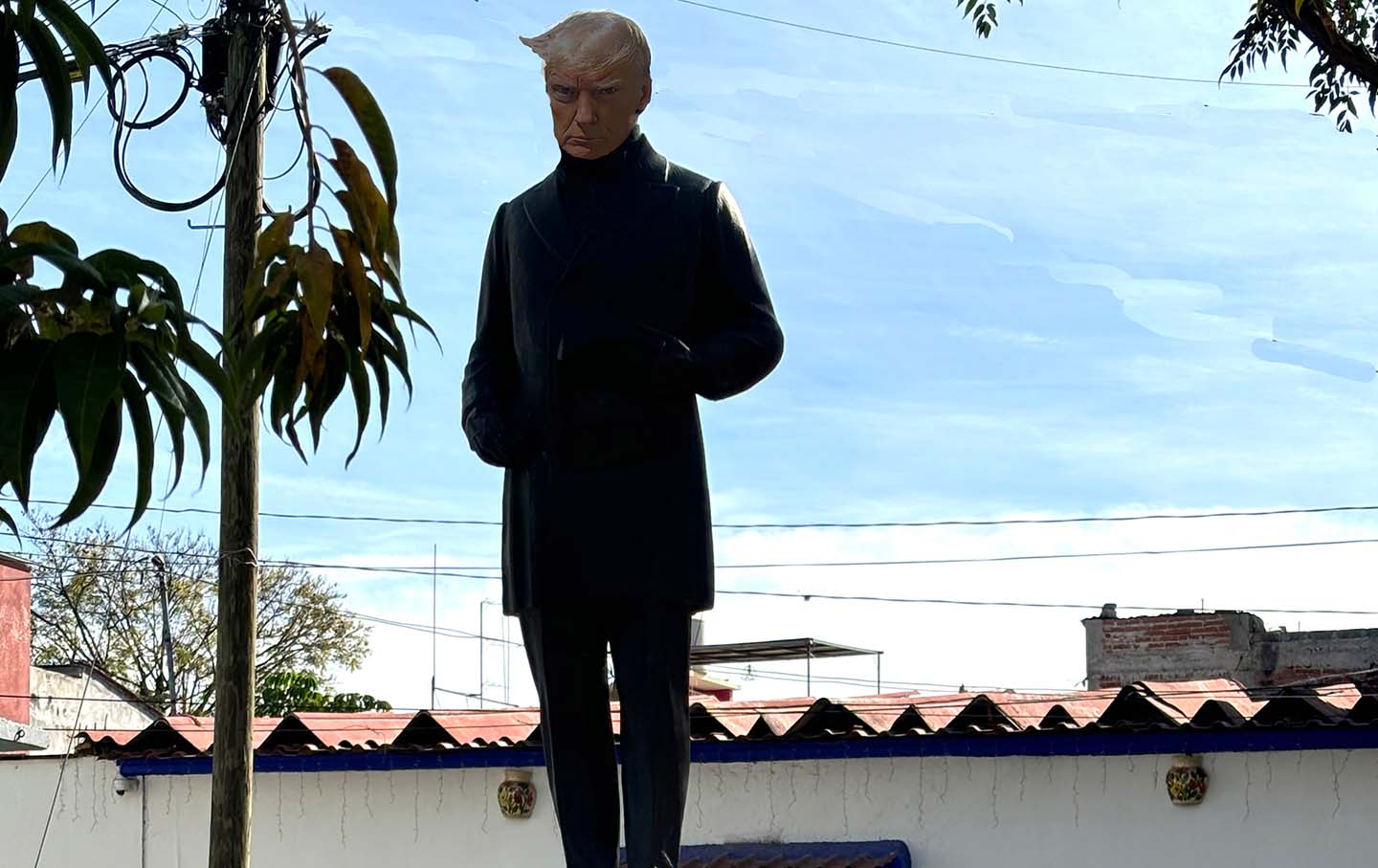
Making Enemies With the World Making Enemies With the World
Trump’s anti-immigrant position is devastating lives.
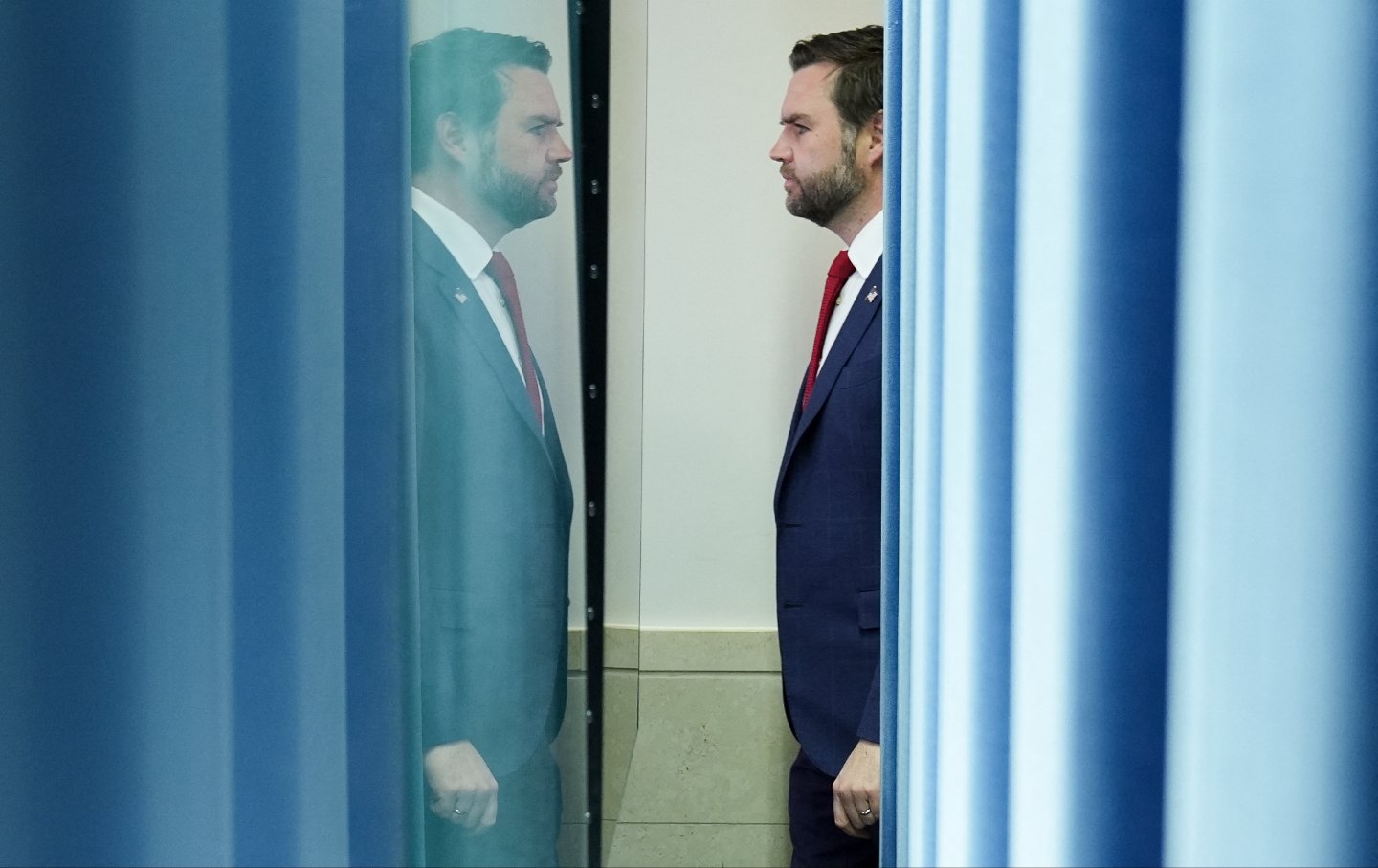
The Agony of JD Vance The Agony of JD Vance
The vice president's main job appears to be to embody the banshee scream of a dying order.
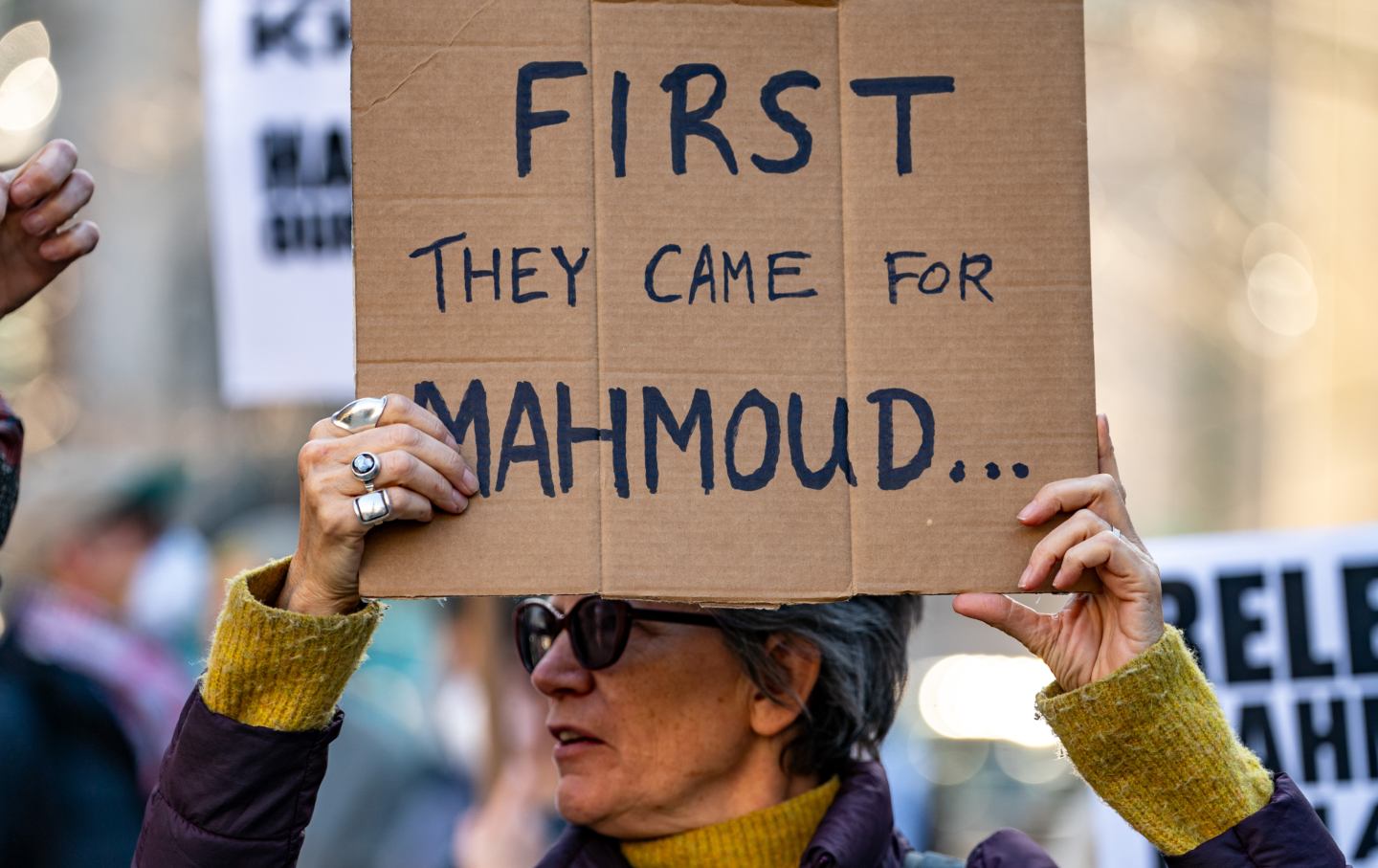
14 House Dems Demanded Mahmoud Khalil’s Release. Where Are the Others? 14 House Dems Demanded Mahmoud Khalil’s Release. Where Are the Others?
All members of Congress swore oaths to defend the right to speak freely and assemble to petition for the redress of grievances. Why did so few of them sign this important letter?
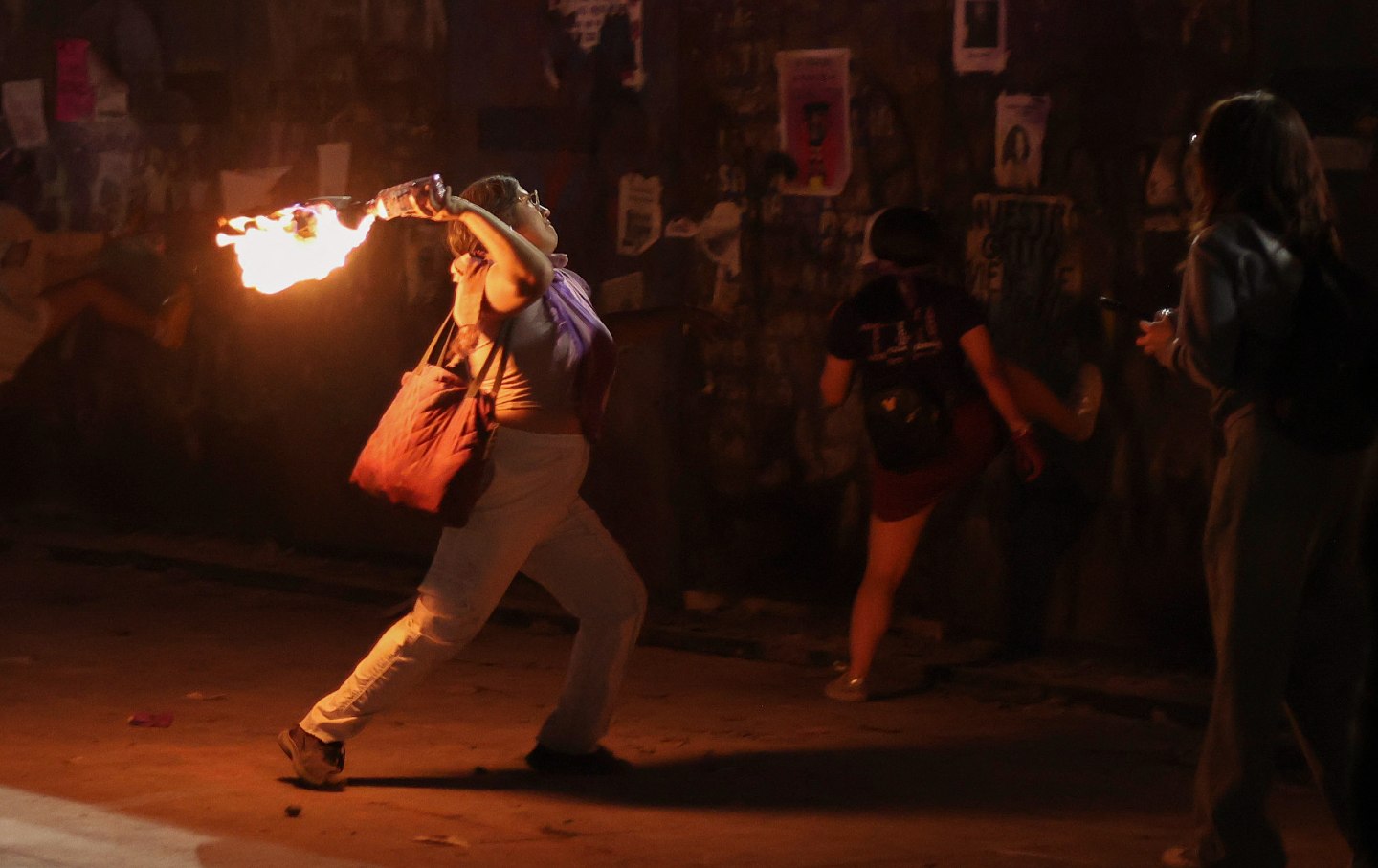
Is Political Violence Ever Acceptable? Is Political Violence Ever Acceptable?
Natasha Lennard argues that it’s harmful to acquiesce to the state’s determinations of violence, while David Cortright writes that violent acts prevent mass resistance movements.


